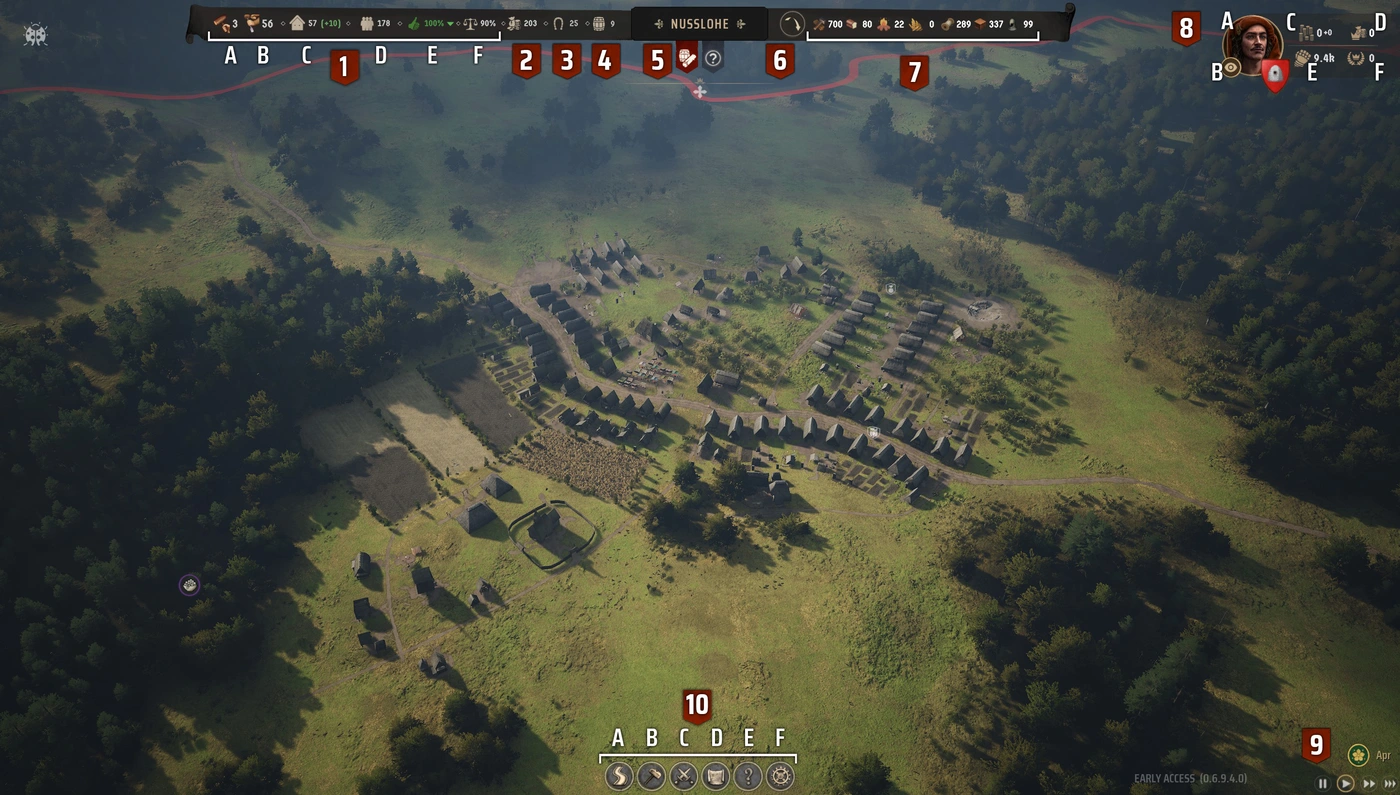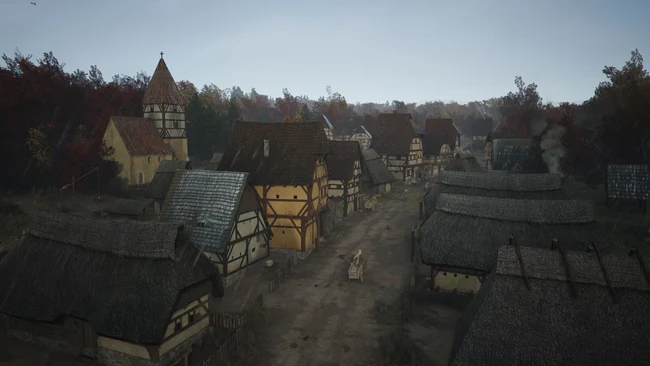Understanding these top-level elements of Manor Lords is essential to effectively governing. Note that the top bar User Interface provides information tied to the region you are currently in.
Manor Lords: Gameplay Basics (User Interface)

- Population Overview – A glance at various factors affecting a region’s population.
- 1a – Unassigned Families – Families that do not have a specific job assignment. These families are necessary for construction and for guiding oxen in timber transport.
- 1b – Assigned Families – Families that have been assigned jobs. These families will have a primary worker, with other members supporting the primary worker.
- 1c – Living Space – How many families the current Region can support, increased by building or expanding Burgage Plots.
- 1d – Total Population – Your total Region population, broken down by different family levels.
- 1e – Approval – Controls overall Population Growth and the morale of your militia when rallied from the region. Higher approval increases the rate of families joining your settlement as long as there is space.
- 1f – Public Order – Governs the chance of crime, with low public order permanently turning citizens to banditry.
- Regional Wealth – The amount of money villagers own from the current region. It can be used to import goods, upgrade artisan spaces, or transfer to your personal treasury via a tax policy.
- Livestock – The total space for stable and pasture livestock, with an indication of unassigned livestock in parentheses. Anyone can use unassigned livestock for resource transportation.
- Supplies – The months before your food and fuel supplies run out. Specific workplaces require fuel, and home fuel consumption doubles during winter.
- Settlement Menu & Notifications – Hovering over your settlement name will bring up a tooltip of the current settlement level and the requirements to level up. Each level provides you with a Development Point that you can use to specialize your town and make it more efficient.
–
Selecting the settlement name will bring up a menu to use Development Points, enact Policies, and set Production limits. However, some of these are still Work-in-Progress and may not be fully functional until later in the EA period. - Total vs Surplus Goods – Total goods show all goods in the region, while surplus shows you what stock remains after resources have been reserved.
–
Imagine you have 5 planks, and place a building that costs 5 planks to build. Your total stock remains 5, but your surplus becomes 0 since the planks are now reserved for construction. - Goods Categories – A range of goods filtered into categories. Hover over each category to see a breakdown of each good.
- Personal Overview – A glance at your personal stats. Some of these elements may be WIP for the initial early access launch.
- 8a -Legacy – This provides information about yourself, such as personal details, new/active/completed opportunities, etc.
- 8b – Visit Mode – Toggle third-person mode and walk around your settlement.
- 8c Treasury – Your personal money can be used for diplomacy, hiring retinues or mercenaries, and settling a new region.
- 8d – Annual Royal Tax – Amount of tax money owed to your king.
- 8e – Influence – Necessary for diplomacy and pressing claims. Influence is gained by raising the settlement level, enacting policies, conquering bandit camps, and upgrading your churches and manors.
- 8f – Kings Favor – Favor can be used for diplomatic purposes, including pressing and refuting claims.
- Seasons & Time – Seasons are deeply connected to your people’s lives and affect different jobs. Hovering over the season icon will give a tooltip explaining when seasons occur and their effect on food and agriculture. Time can be paused or accelerated based on your gameplay style. By default, pressing X accelerates time, while pressing Z decelerates, with the maximum speed currently at x12.
- Game Tools – A set of buttons to build and manage your settlement. These buttons all have hotkeys for faster interaction.
- 10a – Roads – construct roads to connect your settlement buildings. Villagers will follow these roads as they travel, depending on their job.
- 10b – Construction – This brings up all your construction options across several building types. Hovering over any building will bring up construction costs and any requirements to unlock it.
- 10c – Army – Shows any retinues you have created, including militia, retinues, and mercenaries.
- 10d – Map – This button brings you to the region map, which gives you visibility over all regions, their ownership, and any resources.
- 10e – Help – The help menu defines various mechanics and terminology throughout the game.
- 10f – Settings – Customize your game to your needs, from graphics and audio to hotkeys and accessibility.
